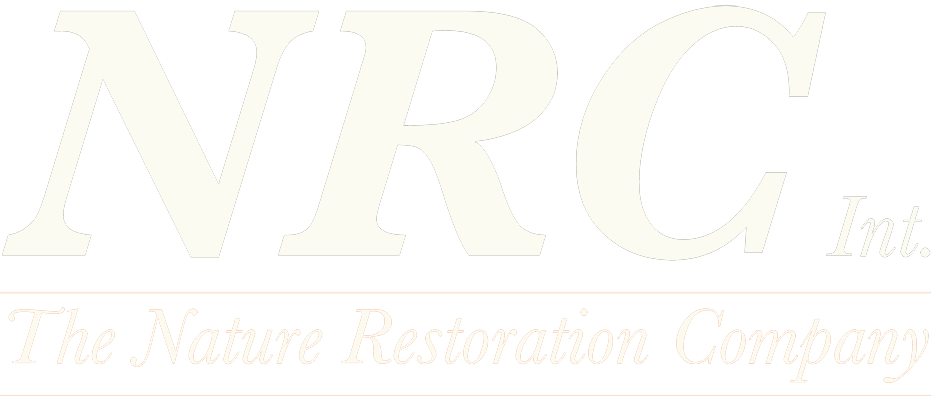
NRC is clear in its values believing that:
NRC has a governance model that is
based on Dutch legislation regarding “Good Governance” and statutory obligations. A “Supervisory Board” has been set up and in addition, NRC remains accountable in its annual report, adhering to the values established by EU legislation.
NRC understands the problem
The problem analysis for NRC’s Intl. Project Development Document (PDD) have been divided into the following four categories:
These categories are addressed in the PDD (Project Design Document) in detail. The challenges facing the program area and the causes of various problems can be described according to NRC’s “Theory of Change”. The approaches that can be used to halt and reverse the identified challenges and problems are described. How these challenges can be met and how these problems can be solved (short- and long-term objectives) has also been addressed in the PDD.
NRC’s Theory of Change is based on the four key principles related to the UN Social Development Goals:
More importantly, NRC’s Theory of Change believes that carbon certification is only possible when the SDG regulations have been truly implemented in the project, with an emphasis on collaborating with the communities themselves.
NRC realizes that it is working in a continually changing context
NRC’s Int. Theory of Change is based on the presumption that you need a long-term approach to achieve sustainable change in a community and to secure the program’s goals. Thus, we should realize that we are dealing with a continually changing context and that all of the long-term decisions could be subject to change. For short-term projects, this has less bearing, but nevertheless it is still important to take into account. This goal has been designated to span more than 30 years of employing carbon methodologies.
Major assumptions regarding the NRC’s Theory of Change
Program-based Approach
A program-based approach stands for developing and implementing an integrated, long-term 20 to 30/50-year ecological, socially, technically, and financially sustainable program.
A well-planned program provides cohesion between the various activities (projects), so that the long-term objectives can be achieved in order to stop further degradation of the program area and to keep communities from falling into the poverty trap.
During the program, which can last anywhere from between 20 to 30/50 years,
we are confronted with a continually-changing context. This means that the commitment to the program must be based on a long-term relationship, which also includes a long-term financial commitment.
A distinction should be made between the whole program (the sum of all projects, environmental issues, ecological issues, social issues, and governance issues) and the individual short-term projects which are needed to reach the long-term goals. (One objective, budget, and time frame).
Another consequence of this is that we make a distinction between
Part of the program-based approach is to include a well-defined exit strategy for the whole program as well as for all the individual projects. There should be cohesion between the defined outcomes and these should coincide with the precise moment that the exit strategy needs to be carried out.
Business Rigor for Sustainability Approach
When it comes to Economic Value Chain Projects, NRC has a clear vision of how sustainability should be organized through the method, “Business Rigor for Sustainability”.
Business rigor means: optimizing profit for the farmers’ benefit, securing continuity, and growth through increased production. With a value driver: profit maximization for farmers and rural prosperity. Daily Control: Farmers, together with investors/private sectors (local banks), oversee daily management; balancing the short-term interests of farmers with the long-term sustainability of the business.
The core essence of this approach is:
NRC Intl. will be initiating a “Catalytic Financial Vehicle” to organize the various ways of financing so that the long-term (sustainable) goals can be achieved. A part of this ‘vehicle’ will be used to serve as a catalytic fund that has been organized by NRC Intl. to fund future projects.
Increasing knowledge and enhancing skills
Apart from mobilizing the local communities to participate in the project, the project strives to increase the knowledge within the local communities and to enhance the skills of their farmers, in the area of sustainable management regarding resources, financial management, livestock development planning (holistic land use, Savory holistic rangeland management), conservation farming, and tree nursery development. The program consists mainly of practical courses to learn about the following topics: conservation farming and sustainable agricultural practices, livestock development planning, beekeeping practices, water management and erosion control, as well as how to develop entrepreneurial and leadership skills.
Furthermore, NRC Int. aims to enhance the skills of its project staff and management by offering local and international training courses, which teach how to monitor and select the different carbon certification methods. This will be done in an effort to enable the management and administrators to analyze ideas and to use their logic so that they can determine the strengths and weaknesses of the various standards that have been set. This will be done in an attempt to teach them how to combine information, draw conclusions and to think out of the box so they can find their own answers by employing social, financial, technical, and management practices. From the start, NRC Int. will be recruiting competent staff to manage the program.
Focusing attention on the poverty trap
In most of the programs, poverty, unemployment, and a lack of economic possibilities form the three main drivers for deforestation and land degradation. These problems should be addressed from the very start in an integrated long-term manner by following up on the generally accepted UN Social Development Goals (SDG). These goals include a universal call to action to end poverty, to protect the planet and to improve the lives and prospects of everyone, everywhere. The SDGs have been designed to end poverty, hunger, AIDS, and discrimination against young girls and women. Moreover, economic growth should be created which provides sustainable jobs and promotes equality . The point of departure for NRC Intl. BV will be to identify and implement carbon programs, which in turn will generate income and create jobs. This will ensure the participation of local communities as they will soon be able to witness the benefits that have evolved from the program.
Using carbon offsets as a financial vehicle
All the programs and projects identified by NRC are keen to take advantage of the financial and technical opportunities offered by the carbon offset market. Carbon Offset financing is seen as a possibility for long-term planned income. The way in which the carbon proceeds (profit sharing) can be used is, in most cases, has been set out in government regulations.
Since a quality carbon offset project mitigates CO2 emissions by reducing, avoiding or removing carbon from the atmosphere, it also presents additional benefits such as funding for improving livelihoods, conserving biodiversity, and ensuring a follow-up on the SDGs. It should be employed as the Central Financing vehicle for development. This is often achieved in combination with subsidies, private funding for relevant projects and the participation of institutional and private investors.
NRC has made its stance clear regarding how financial opportunities that appear on the carbon market can best be obtained:
In both cases, the principles described in this Theory of Change apply, including the Management Information System.
Management Information Systems (MIS)
NRC Int. plans to establish Management Information Systems (MIS) and to set up databases for monitoring the carbon certification methodology chosen, for distributing the forest resources/materials (fruits, honey, water), for disseminating market information and for pricing products to sell. These platforms will be developed in partnership with the corresponding private sector actors, with other project managers and with the practitioners who are developing mobile technologies.
The MIS database will include data to monitor the different impact categories that belong to the certification method chosen (e.g. Gold Standard, VCS, CCBS, VERRA, Plan VIVO) in place. The database will also be used to introduce the participants involved in the TIST program. NRC Int. has been designated as a certified implementer for the TIST program.
By adhering to the principles of our Theory of Change we can realize our formulated goals :
[1] (The 17 SDGs are: no poverty, zero hunger, good health and well-being, quality education, gender equality, clean water and sanitation, affordable and clean energy, decent work and economic growth, industry, innovations and infrastructure, industry, reduced inequalities, sustainable cities and communities, responsible consumption and production, climate action, life below water, life on land, peace, justice and strong institutions, partnerships for the goals).
The Nature Restoration Company is always looking for new areas to develop. If you are a representative of a local community, regional authorities and/or landowners with at least 10,000 hectares (25,000 acres) of land, please contact us for an exploratory conversation. NRC-Africa mainly focuses on restoring overgrazed, deforested, and degraded areas in Tanzania, Kenya and Zambia.
